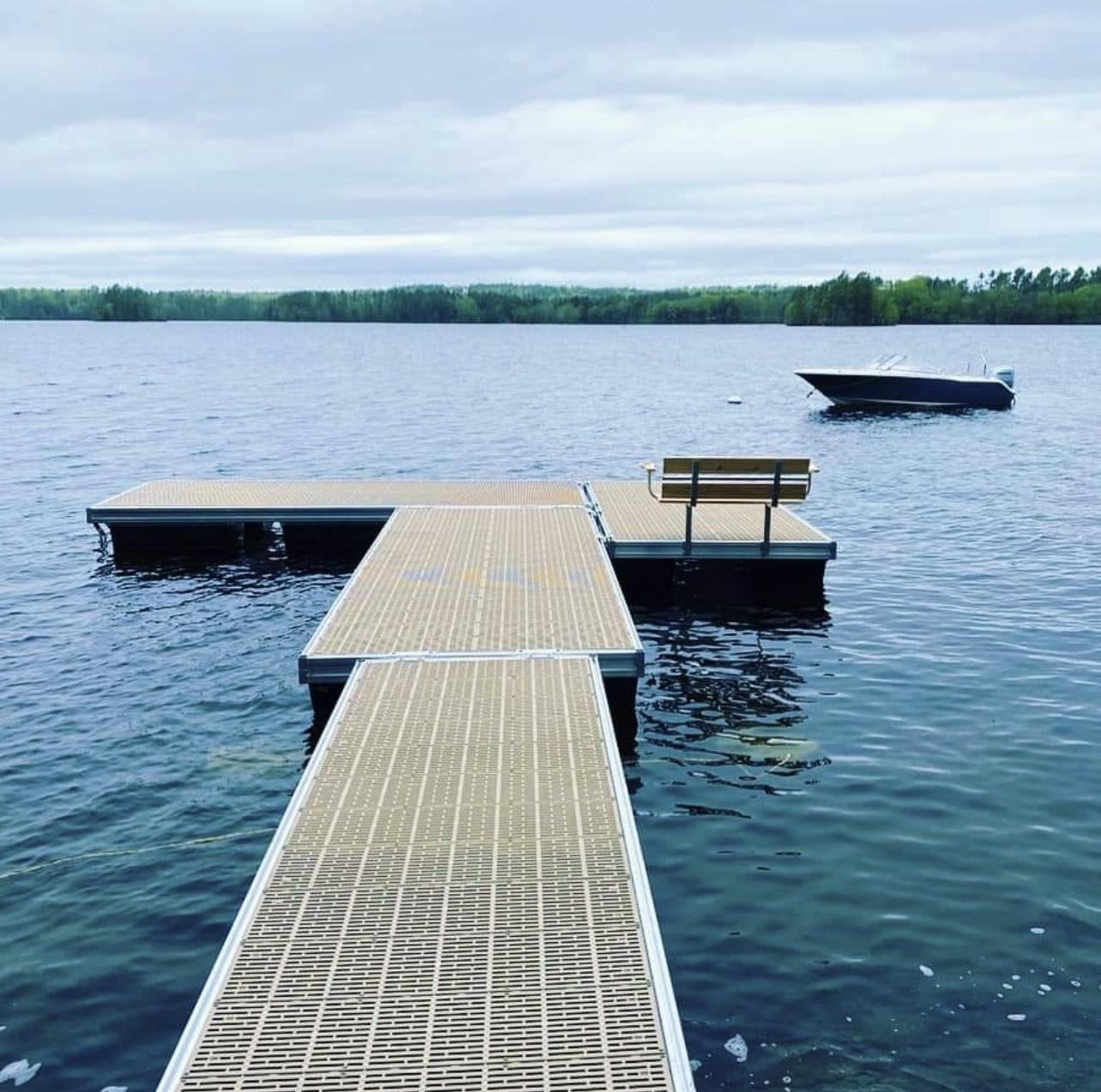Ingenious Floating Docks: The Future of Waterside Access and Recreation
Ingenious Floating Docks: The Future of Waterside Access and Recreation
Blog Article
Upgrade Your Waterfront With Resilient Floating Docks
Updating your beachfront with sturdy floating docks can considerably boost both capability and looks, giving a functional service for numerous water tasks. With a variety of products readily available, consisting of low-maintenance options and conventional timber, selecting the right dock can enhance your individual style and fulfill sensible requirements.
Benefits of Floating Docks
Floating docks deal a wide range of benefits that enhance their allure for numerous maritime applications. Unlike conventional fixed docks, floating docks rise and autumn with the trend, guaranteeing regular availability for watercrafts and boat no matter of environmental conditions.
In addition, floating docks are simpler to install and move, giving versatility for seasonal or momentary usage. Their modular style permits personalization to fit specific requirements, whether for exclusive marinas, property waterfronts, or commercial applications.
In addition, floating docks create very little disturbance to the water setting, preserving local ecological communities and lowering the likelihood of disintegration. They likewise offer enhanced safety and security and security for customers, as their buoyant nature offers an extra forgiving surface than inflexible frameworks.
In addition, floating docks can help with a diverse series of activities, such as fishing, swimming, and leisure boating, making them a useful possession for waterfront advancement. Their versatility and functionality make floating docks a recommended option for a variety of maritime jobs.
Picking the Right Materials
Choosing appropriate products for floating docks is important to their durability, performance, and overall performance. When choosing products, consider variables such as environmental direct exposure, maintenance requirements, and structural integrity. Typical materials consist of timber, plastic, aluminum, and composite alternatives, each offering distinct advantages and disadvantages.
Wood, while visually pleasing, needs normal maintenance to avoid rot and degeneration. Pressure-treated timber can improve longevity, however it may still give in to water damages in time. Plastic drifts, commonly made from high-density polyethylene, are resistant to corrosion and require very little maintenance, making them an attractive choice for low-maintenance applications.
Aluminum is another sensible alternative, known for its toughness and lightweight properties. It is immune to rust and can hold up against extreme weather, although it may be a lot more pricey than other materials. Composite materials incorporate the very best features of timber and plastic, providing a resistant and low-maintenance alternative that mimics the look of wood without the linked downsides.
Inevitably, the option of material must straighten with the intended usage, ecological factors to consider, and budget restraints, ensuring a long lasting and useful floating dock that satisfies your specific needs.
Installment Process Introduction
The successful installation of a floating dock counts on cautious planning and implementation, ensuring that it runs efficiently in its desired setting. The initial step involves analyzing website conditions, consisting of water deepness, shoreline features, and dominating climate patterns, which will certainly inform the dock layout and anchoring system.
Adhering to the website assessment, the next phase is to prepare the floating dock parts. This consists of constructing the structure, securing drifts, and affixing any type of needed hardware. It is important to make certain that all connections are robust and water-resistant to withstand marine conditions.
When the dock is put together, the setup process commences with placing the dock in the water. This can involve a crane or various other training tools, particularly for larger frameworks. Proper alignment is important for performance and security.

Maintenance Tips for Durability
Normal maintenance is vital for making sure the long life and ideal performance of a drifting dock. To accomplish this, start find out here with regular inspections a minimum of two times a year, concentrating on the integrity of the dock's framework, including the flotation protection devices and attaching equipment. Search for signs of rust, damages, or wear, and address any concerns promptly to protect against more wear and tear.
Cleaning is one more critical element of maintenance. Remove debris, algae, and barnacles from the dock's surface to stop unsafe conditions and keep visual allure. Use a soft brush and a moderate cleaning agent to avoid damaging the dock's products.
Additionally, ensure that the dock is appropriately secured and safeguarded to hold up against seasonal changes in water degrees and weather. Check the anchoring system for stability and make changes as needed.
Enhancing Your Outdoor Visual
To create an aesthetically enticing exterior area, integrating a floating dock can dramatically enhance the total aesthetic description of your waterfront residential or commercial property. Floating docks are not only practical however can also work as a striking prime focus that matches the natural environments - floating docks. Readily available in different materials and designs, these docks can be customized to match your building's architectural design and landscape
The enhancement of ornamental components, such as integrated lighting or stylish railings, better boosts the dock's aesthetic allure. Take into consideration utilizing natural timber finishes, which mix flawlessly with the setting, or selecting contemporary products like aluminum or composite decking that supply a smooth, modern appearance.
Purposefully putting planters or seating locations on or around the dock can create inviting spaces that encourage leisure and satisfaction of waterside sights. Furthermore, integrating colors and appearances that harmonize with your landscape will certainly develop a cohesive aesthetic throughout your outside area.

Final Thought

Upgrading your waterfront with long lasting floating docks can considerably enhance both performance and aesthetics, giving a functional solution for numerous water activities. Unlike standard set docks, floating docks surge and autumn with the tide, guaranteeing consistent access for watercrafts and boat regardless of environmental problems.Choosing suitable products for floating docks is crucial to their durability, performance, and general effectiveness.Once the dock is assembled, the installation procedure starts with placing the dock in the water.In summary, floating docks offer many benefits, including versatility to water level modifications and a selection of product alternatives.
Report this page